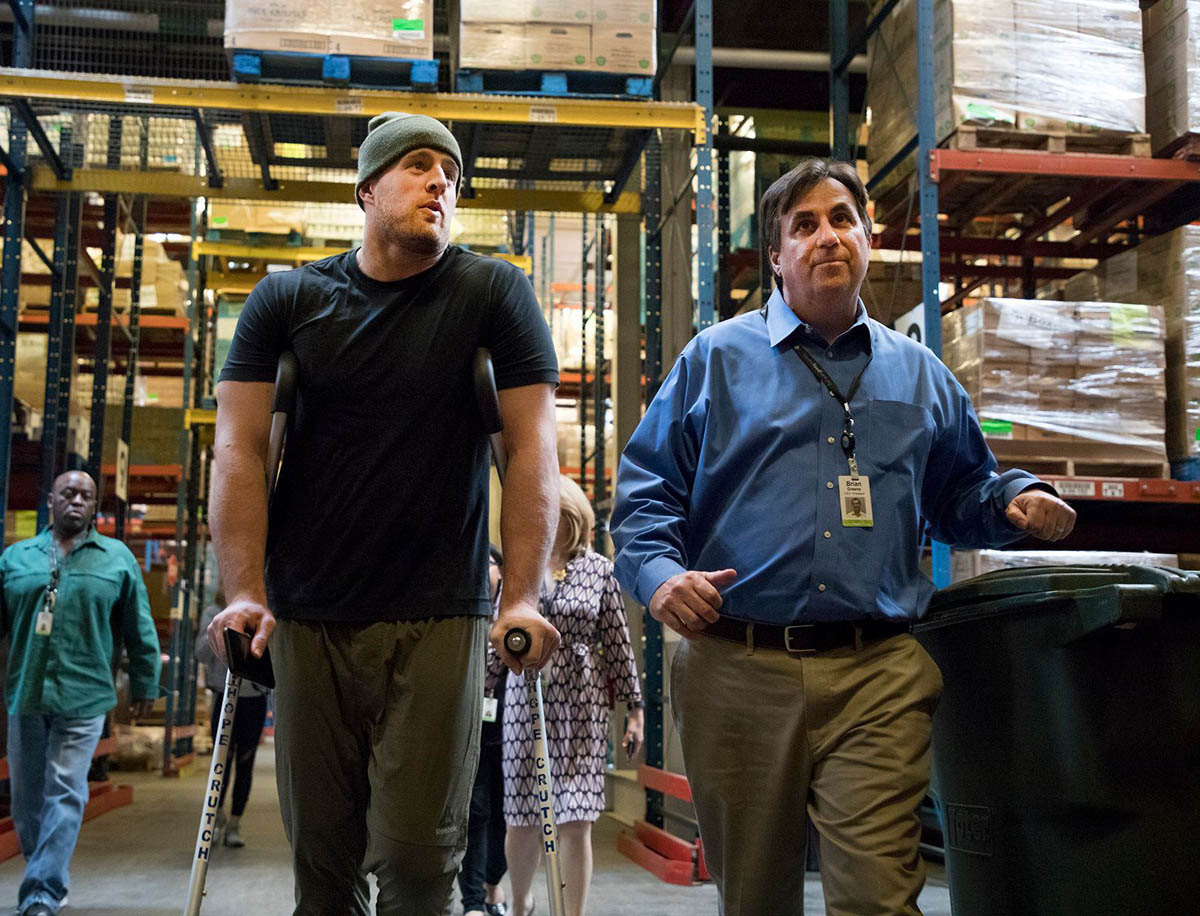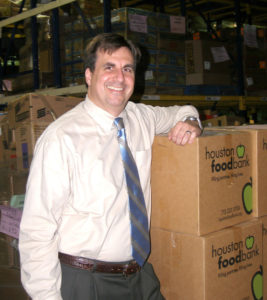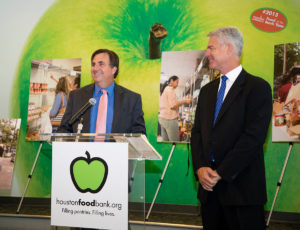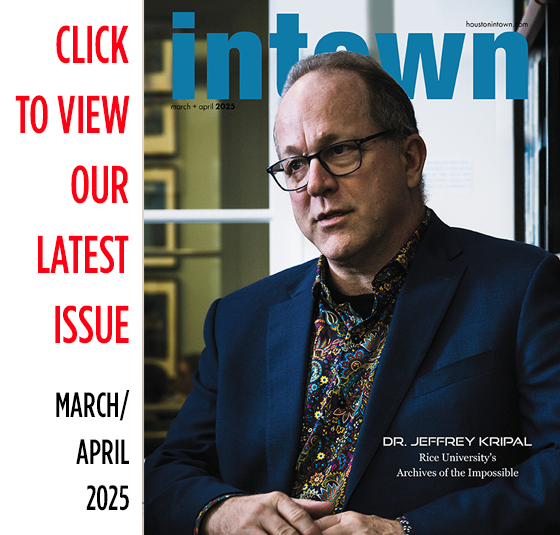Catching Up with Houston Food Bank’s Brian Greene
Feeding the Hungry During the Pandemic

COVID-19 has played havoc with the economy, but that has caused Houston Food Bank’s business to go up, but that’s rather a sad thing when you’re in the business of feeding the hungry.
“I was really nervous at the beginning of it,” says Houston Food Bank President and CEO Brian Greene, “because the energy crisis was already hitting Houston hard. But then Houstonians really stepped up.”
It’s been a challenging year for the 58-year-old native Californian, but he’s been helming food banks his entire career.
 Greene received a BA in Economics from Humboldt State University and an MA in Economics from the University of Tennessee. He was working on his doctorate there when he decided to take a break to gain some real world experience. The newly opened Second Harvest Food Bank in Knoxville, Tennessee was looking for an executive director and he took the job, thinking it would be a temporary gig. But he had found his calling. Five years later he became the executive director of the Second Harvest Food Bank of Greater New Orleans and Acadiana and stayed for 12 years. In 2005 he took the job as president and CEO of the Houston Food Bank, the largest food bank in America, in a city that is the second most food insecure city, behind Los Angeles, in the country.
Greene received a BA in Economics from Humboldt State University and an MA in Economics from the University of Tennessee. He was working on his doctorate there when he decided to take a break to gain some real world experience. The newly opened Second Harvest Food Bank in Knoxville, Tennessee was looking for an executive director and he took the job, thinking it would be a temporary gig. But he had found his calling. Five years later he became the executive director of the Second Harvest Food Bank of Greater New Orleans and Acadiana and stayed for 12 years. In 2005 he took the job as president and CEO of the Houston Food Bank, the largest food bank in America, in a city that is the second most food insecure city, behind Los Angeles, in the country.
Founded in 1982, the Houston Food Bank (HFB) is a certified member of Feeding America, the nation’s food bank network, with a four-star rating from Charity Navigator. They distribute fresh produce, meat, and nonperishables and prepare nutritious hot meals for kids in the state-of-the-art Keegan Kitchen. Since taking over, Greene has overseen the organization’s unprecedented growth. In August 2011, the Food Bank moved into its current home, a 308,000 square-foot warehouse and office facility, purchased and renovated following completion of a $55.6 million capital campaign. The new building is four times larger than the previous space and allows for more food distribution and more space for volunteers.
In the fall of 2008, the End Hunger Network, a Houston-area food rescue organization, merged with Houston Food Bank. Through Greene’s leadership, HFB programs have expanded to feed more children and tap into additional sources for food donations. In early 2016, a second capital campaign was approved for $2.6 million to build a new home for the Keegan Kitchen inside the Houston Food Bank headquarters.
In April of 2019, Greene received the John van Hengel Fellowship award at Feeding America’s 2019 Hunger’s Hope Awards. The award honors the ideals of the late John van Hengel, who developed the concept of food banking in the 1960s. He was recognized for his excellence in leadership, local impact and national influence, and entrepreneurial spirit in the area of hunger relief.
But nothing in his past could compare to the last year.
 “At the peak in May,” Greene recalls, “we were serving 140,000 households a day. Back then the distributions ended when we ran out of food and that was one million pounds of food. By December it slowed some, 800,000 pounds a day and we managed to get to everyone in line.”
“At the peak in May,” Greene recalls, “we were serving 140,000 households a day. Back then the distributions ended when we ran out of food and that was one million pounds of food. By December it slowed some, 800,000 pounds a day and we managed to get to everyone in line.”
In November the Houston Food Bank served 103,000 households per week, compared to 74,000 for the same month in 2019. And while the economy improved a little at the end of last year, Greene expects the need for food to remain higher than normal through most of 2021.
“Until the economy recovers there will be a significant food need through most of the year,” he says. “And my biggest concern is getting food in the new year.”
While monetary donations were up during the height of the pandemic, some food donations were lower. “At the beginning, we wouldn’t get any donations from grocery stores, because they stopped having surplus,” he says. “Due to panic buying their shelves were empty.”
But with so many restaurants shut down, farmers and ranchers had food to spare. Because of the Trump administration’s trade wars, there was nowhere to sell the food. The U.S. Department of Agriculture launched a plan to aid farmers during the pandemic by buying their food and donating it to food banks.
“But they’ve cut that spending by 50 percent,” Greene says. “I don’t know what’s going to happen with that program this year.
Another challenge the Houston Food Bank, and many nonprofits as well, faced, was a lack of volunteers. Luckily, with monetary donations up, Greene’s organizations was able to hire many unemployed hospitality workers.
And Distribution changed drastically, The norm became massive drive-through distributions like the one held at NRG Stadium before last Thanksgiving where a sea of cars lined up for hours to get groceries put in their cars’ trunks by masked workers. It’s an efficient way to get food to the hungry during a health care crisis, but it lacks one thing.
“It’s missing the personal interaction,” says Greene. “There’s not a real connection between people and workers.”
To donate or volunteer with the Houston Food Bank go to houstonfoodbank.org























